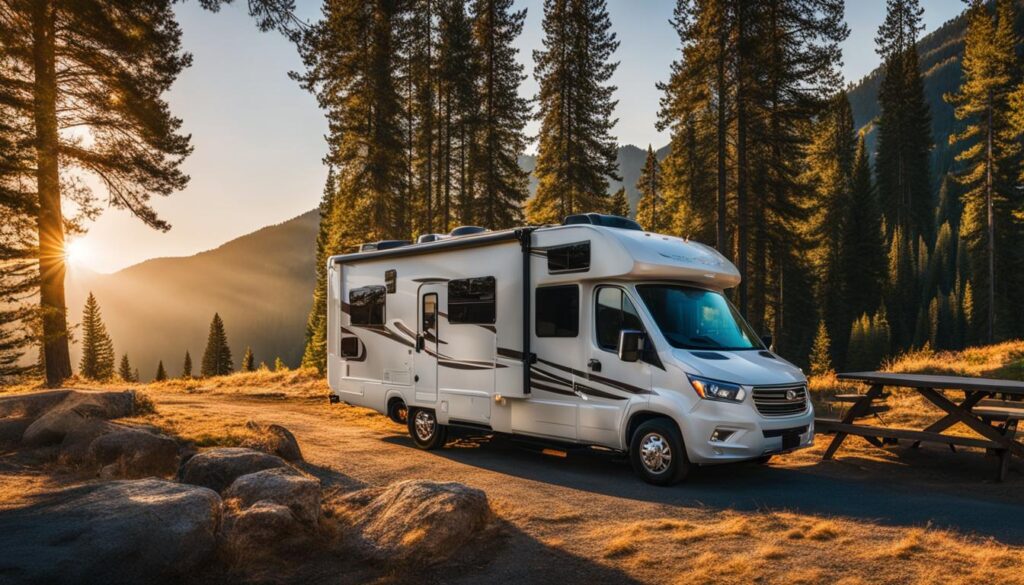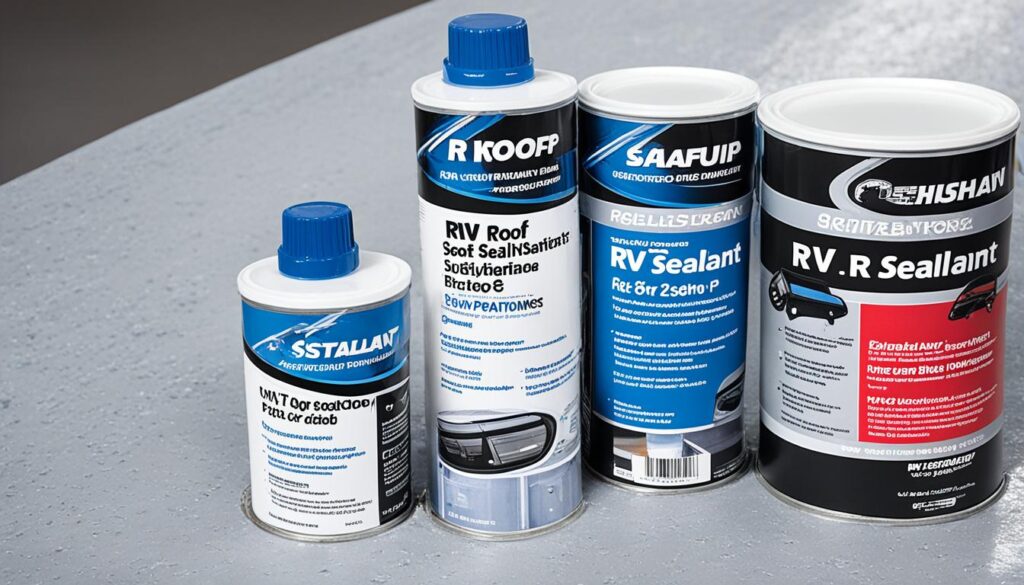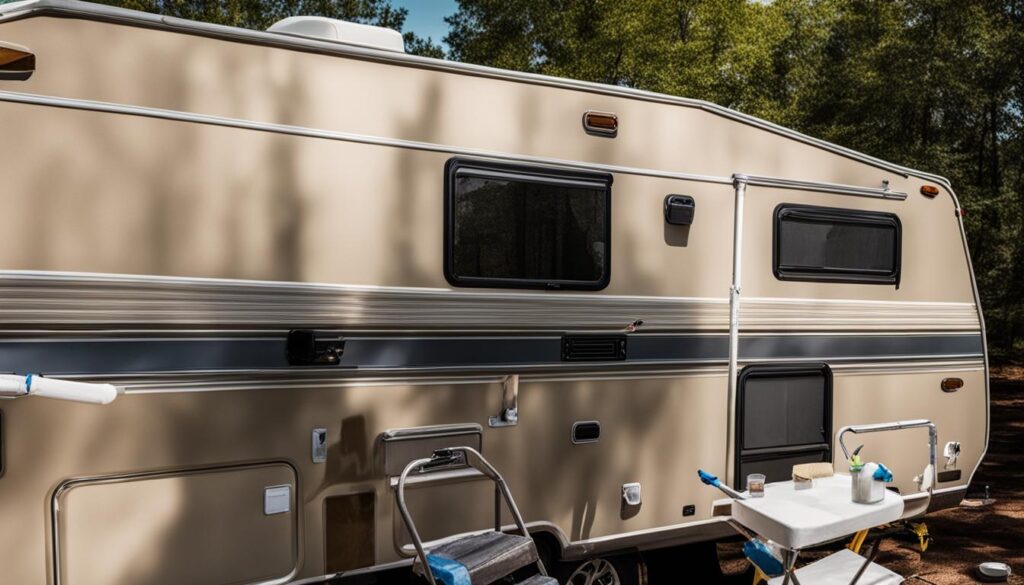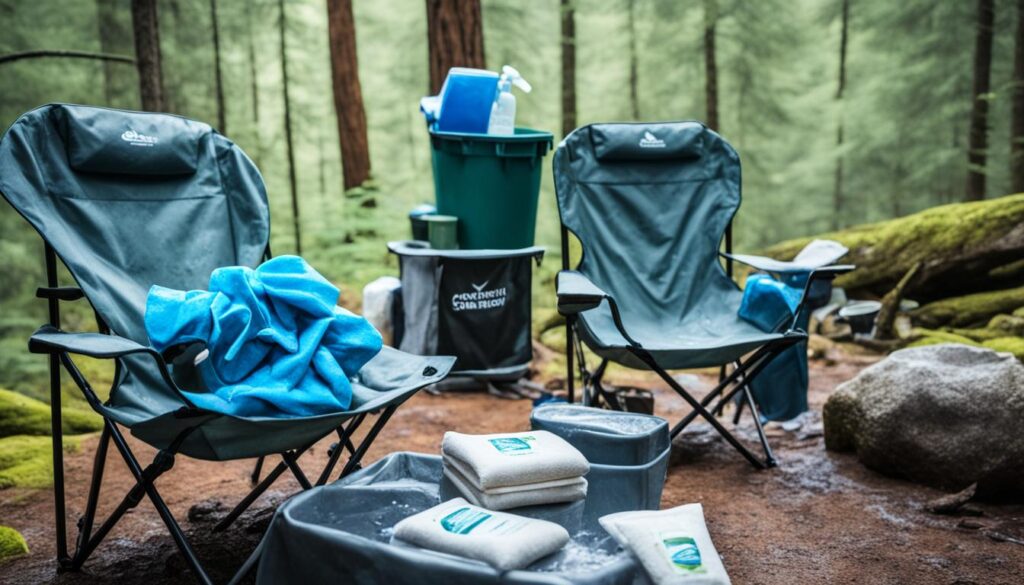As an RV owner, you know the importance of keeping your beloved home on wheels in top condition. While regular maintenance is crucial, one aspect that often gets overlooked is the RV roof. The question arises: How often should you seal your RV roof to ensure its longevity and prevent costly repairs?
RV roof sealing frequency is a topic that sparks curiosity and challenges common beliefs. Many owners wonder if sealing the roof every year is necessary or if they can wait longer between sealant applications. The truth is, the frequency of sealing your RV roof depends on several factors.
Understanding the maintenance needs for your RV roof is essential in protecting your investment and ensuring a comfortable and leak-free traveling experience. In this complete guide, we will delve into the recommended RV roof maintenance schedule, the benefits of regular sealing, and the best products to use for maximum effectiveness.
Key Takeaways:
- Regularly sealing your RV roof is crucial for protecting its structure and preventing leaks and damage.
- The frequency of sealing depends on various factors such as weather conditions and the environment your RV is exposed to.
- Inspecting and recoating your RV roof helps prevent leaks, drafts, and further damage.
- Applying RV roof coating is best done in the early morning or evening, away from direct sunlight, and during dry and less humid periods.
- Using high-quality sealant products like Liquid Rubber RV Coating and Liquid Rubber EPDM Primer ensures the best protection for your RV roof.
Contents
Why Do I Need to Recoat My RV Roof?
RV roofs are prone to RV roof leaks, and prolonged exposure to water can cause significant damage to the interior of the RV. That’s why it’s essential to regularly inspect and recoat your RV roof to prevent leaks, drafts, and further damage. By taking proactive measures, you can ensure a comfortable and leak-free interior, as well as extend the life of your RV roof.
Inspecting your RV roof is a crucial step in identifying any potential leaks or damage. Regular inspections allow you to catch and address issues early, preventing them from escalating into more significant problems. Look for signs of RV roof leaks such as water stains, discoloration, or soft spots on the ceiling or walls. Inspecting your RV roof at least twice a year, or after heavy storms, is recommended.
Recoating your RV roof offers several benefits that go beyond the prevention of leaks and drafts. Here are the key advantages of RV roof recoating:
- Extended Roof Life: A well-maintained and recoated RV roof can last significantly longer by protecting it from sun exposure, harsh weather conditions, and general wear and tear.
- Preventing Leaks and Drafts: Inspecting and recoating the roof helps seal any existing cracks, gaps, or deteriorating areas, making it much harder for water to enter and cause damage.
- Maintaining a Comfortable Interior: By preventing leaks and drafts, recoating your RV roof helps maintain a consistent and comfortable temperature inside your vehicle, enhancing your overall RV experience.
- Reducing Repair Costs: Investing in regular recoating can help you avoid costly repairs that may arise from water damage, interior mold growth, or structural issues caused by neglecting RV roof maintenance.
By maintaining a proactive approach and incorporating regular inspections and recoatings into your RV roof maintenance routine, you can enjoy a worry-free journey and prolong the life of your RV roof.
When Should I Apply RV Roof Coating?
Applying RV roof coating at the right time and under suitable weather conditions is crucial for optimal results. Here are some guidelines to help you determine the best time to seal your RV roof:
Time of Day:
The ideal time to apply RV roof coating is in the early morning or evening when the roof is not exposed to direct sunlight. This ensures that the coating can adhere properly without drying too quickly.
Weather Conditions:
Choosing a dry and less humid period is important for the application process. Moisture can interfere with the adhesion and curing of the coating. It’s best to avoid applying RV roof coating during rainy or excessively humid days.
Application Instructions:
Following the manufacturer’s application instructions is crucial for achieving the best results. Each product may have specific requirements and recommendations, such as surface preparation, temperature range, and curing time. Adhering to these guidelines will help ensure proper adhesion and longevity of the coating.
By applying RV roof coating at the right time and under suitable weather conditions, you can enhance the protection and durability of your RV roof, preventing leaks and damage from the elements.

How Often Do I Need to Seal My RV Roof?
Regular maintenance and sealing of your RV roof are essential for ensuring its longevity and protecting it from potential damage. But how often should you seal your RV roof? Let’s explore the recommended frequency of RV roof maintenance and the interval for applying RV roof sealant.
To start with, it is advisable to inspect your RV roof every six months. Regular inspections allow you to catch any potential problems or signs of damage before they become major issues. By staying proactive and addressing minor concerns promptly, you can prevent costly repairs and maintain the integrity of your RV roof.
While inspecting your RV roof is crucial every six months, recoating the seal of the roof doesn’t need to be done as frequently. On average, it is best to recoat your RV roof every two to four years, depending on various factors.
The recommended RV roof sealant interval depends on the weather conditions and the environment your RV is exposed to. If your RV spends most of its time in regions with extreme temperatures, harsh sunlight, heavy rain, or high humidity levels, it may require more frequent sealant applications. In such cases, it would be wise to consider recoating your RV roof every two years to ensure maximum protection.
On the other hand, if your RV is primarily parked in mild weather conditions with limited exposure to harsh elements, you may extend the recoating interval to every four years. However, it’s important to note that even if the roof surface appears to be in good condition, you should still inspect it regularly for any signs of wear and tear.
Additionally, it is crucial to inspect your RV roof after heavy storms or snowfall. Severe weather conditions can cause damage to the roof, leading to leaks and structural issues. By inspecting the roof after such events, you can detect any signs of damage early on and address them promptly.
Remember, regular maintenance and timely recoating of your RV roof can significantly extend its lifespan and save you from costly repairs down the road. So, make it a habit to inspect your roof every six months and recoat it every two to four years, depending on the weather conditions and exposure to environmental factors.
Summary:
- Inspect your RV roof every six months to catch potential problems early.
- Recoat your RV roof every two to four years, depending on weather conditions and exposure to the environment.
- Inspect the roof after heavy storms or snowfall for signs of damage.
What Kind of Sealant Products Should I Use on My RV?
When it comes to sealing your RV roof, using high-quality products is essential to ensure maximum protection against the elements. Liquid Rubber, a trusted brand in the industry, offers a range of premium sealant products specifically designed for RV roof coating.
The two recommended sealant products for RV roofs are the Liquid Rubber RV Coating and the Liquid Rubber EPDM Primer. These products have been extensively tested and proven to provide excellent durability and long-lasting protection.

The Liquid Rubber RV Coating is a versatile and easy-to-use product that forms a seamless, waterproof barrier on your RV roof. It is specially formulated to resist UV rays, weathering, and harsh environmental conditions, ensuring the longevity of your roof.
The Liquid Rubber EPDM Primer is a crucial component in the sealing process, as it prepares the surface for the application of the RV coating. It enhances adhesion and ensures a strong bond between the coating and the roof, maximizing the effectiveness of the sealant.
Both the Liquid Rubber RV Coating and the Liquid Rubber EPDM Primer are DIY-friendly, making them suitable for RV owners who prefer to tackle maintenance tasks themselves. Following the manufacturer’s instructions and tips for application is important to achieve the best results.
To highlight the benefits of using Liquid Rubber sealant products on your RV roof:
- Excellent protection against the elements.
- Easy application, even for DIY enthusiasts.
- UV resistance to prevent damage from the sun.
- Seamless and waterproof barrier.
In summary, when it comes to selecting sealant products for your RV roof, choosing the Liquid Rubber RV Coating and the Liquid Rubber EPDM Primer ensures that you are using top-quality products that provide exceptional durability and protection.
How Do I Know My RV Roof is Damaged?
When it comes to maintaining your RV, keeping an eye on the condition of the roof is essential. Signs of RV roof damage can manifest in various ways, indicating potential issues that need to be addressed promptly. Identifying these signs early on can help prevent further damage and avoid costly repairs in the future.
One common sign of RV roof damage is corrosion on the metal parts of the roof. Over time, exposure to the elements can cause rust and deterioration, compromising the integrity of the roof structure. Regular inspections can help detect any corrosion and enable timely repairs.
Another indicator of roof damage is water damage in the interior of your RV. This can manifest as mold and mildew growth, peeling wallpaper, and discolored streaks on the walls or ceiling. Water infiltration can lead to extensive damage, not only to the roof but also to the interior of the vehicle. It is crucial to address any water damage promptly to prevent further deterioration.
Uneven temperatures or drafts in your RV may also indicate roof damage. If you notice significant temperature variations or experience drafts, it could be a sign that the roof is compromised, allowing air to seep in or escape. These drafts can affect the comfort level inside the RV, especially during extreme weather conditions.
Regular inspections are key to identifying these signs of damage. By inspecting your RV roof periodically, you can catch any issues early on and take the necessary steps to address them. Prompt repairs and maintenance can help prevent further damage and minimize repair costs.
“Regular inspections are key to identifying signs of RV roof damage.”
| Signs of RV Roof Damage | Indications |
|---|---|
| Corrosion on metal parts of the roof | Rust, deterioration |
| Water damage in the interior | Mold, mildew, peeling wallpaper, discolored streaks |
| Uneven temperatures or drafts in the RV | Variations in temperature, drafts |
Conclusion
In conclusion, maintaining and sealing your RV roof regularly is essential for a comfortable and hassle-free RVing experience. By following a proper maintenance schedule and recoating the roof every few years, you can significantly extend its lifespan and avoid costly repairs.
One of the best sealant products on the market is Liquid Rubber RV Coating. With its exceptional quality and durability, Liquid Rubber offers maximum protection against the elements, ensuring your RV roof stays intact and leak-free.
By investing in regular RV roof sealing and using high-quality products like Liquid Rubber, you can enjoy the peace of mind that comes from knowing your RV is well-protected and can withstand any weather conditions it encounters on your travels. Don’t wait until damage occurs; take proactive steps to maintain your RV roof and preserve the value and integrity of your cherished recreational vehicle.
FAQ
How often should I seal my RV roof?
It is recommended to seal your RV roof every two to four years, depending on the weather conditions and the environment it is exposed to.
Why do I need to recoat my RV roof?
Recoating your RV roof helps prevent leaks, drafts, and damage caused by sun exposure and wear and tear. It extends the life of your RV roof and prevents costly repairs.
When should I apply RV roof coating?
The best time to apply RV roof coating is in the early morning or evening when the roof is not exposed to direct sunlight. It is also important to choose a dry and less humid period for the application.
How often do I need to seal my RV roof?
It is recommended to inspect your RV roof every six months but seal the roof every two to four years. Heavy storms or snowfall should prompt additional inspections for damage.
What kind of sealant products should I use on my RV?
Liquid Rubber offers high-quality sealant products specifically designed for RV roofs, such as the Liquid Rubber RV Coating and the Liquid Rubber EPDM Primer. These products provide excellent protection against the elements.
How do I know if my RV roof is damaged?
Signs of RV roof damage include corrosion on metal parts of the roof, water damage in the interior (such as mold, mildew, peeling wallpaper, and discolored streaks), and uneven temperatures or drafts in the RV.
Can regular RV roof maintenance prevent costly repairs?
Yes, regular maintenance and sealing of the RV roof can extend its life and prevent costly repairs. Using high-quality sealant products like Liquid Rubber ensures the best protection against the elements.






